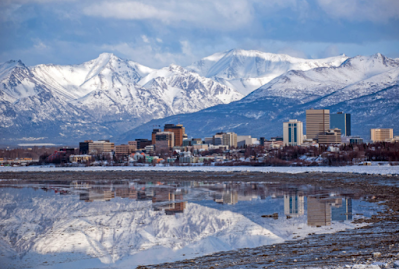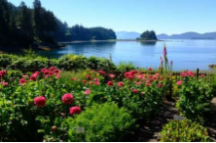Weather: Rain, 56/67F.
Route: Google maps couldn't find the way, but according the the NPS website there is a regular ferry between Juneau and Gustavus. So, from Kluane National Park it is 415 km SSE on Haines Highway, ferry from Haines to Juneau, then ferry from Juneau to Gustavus. It appears as though most people who visit the park do so from the deck of a cruise ship.
Significance: It is the marine part of the same UNESCO World Heritage Site as Kluane. Although it does contain 3.3 million acres of mountains and forests along with the coastline. The largest animals in the park are of course the humpback whales that come here every summer to feed on the abundant fish. The melting glaciers are nutrient rich, which helps to feed the food chain all the way to the top. There are also killer whales, harbor seals, and 280 kinds of birds. There are also many of the land mammals that we've seen in Kluane and Denali, including bears, mountain goats etc.
Websites: UNESCO World Heritage Site, National Park Service.
Images:
The marine wildlife is the other main reason people visit (from visittheusa.com)

















































